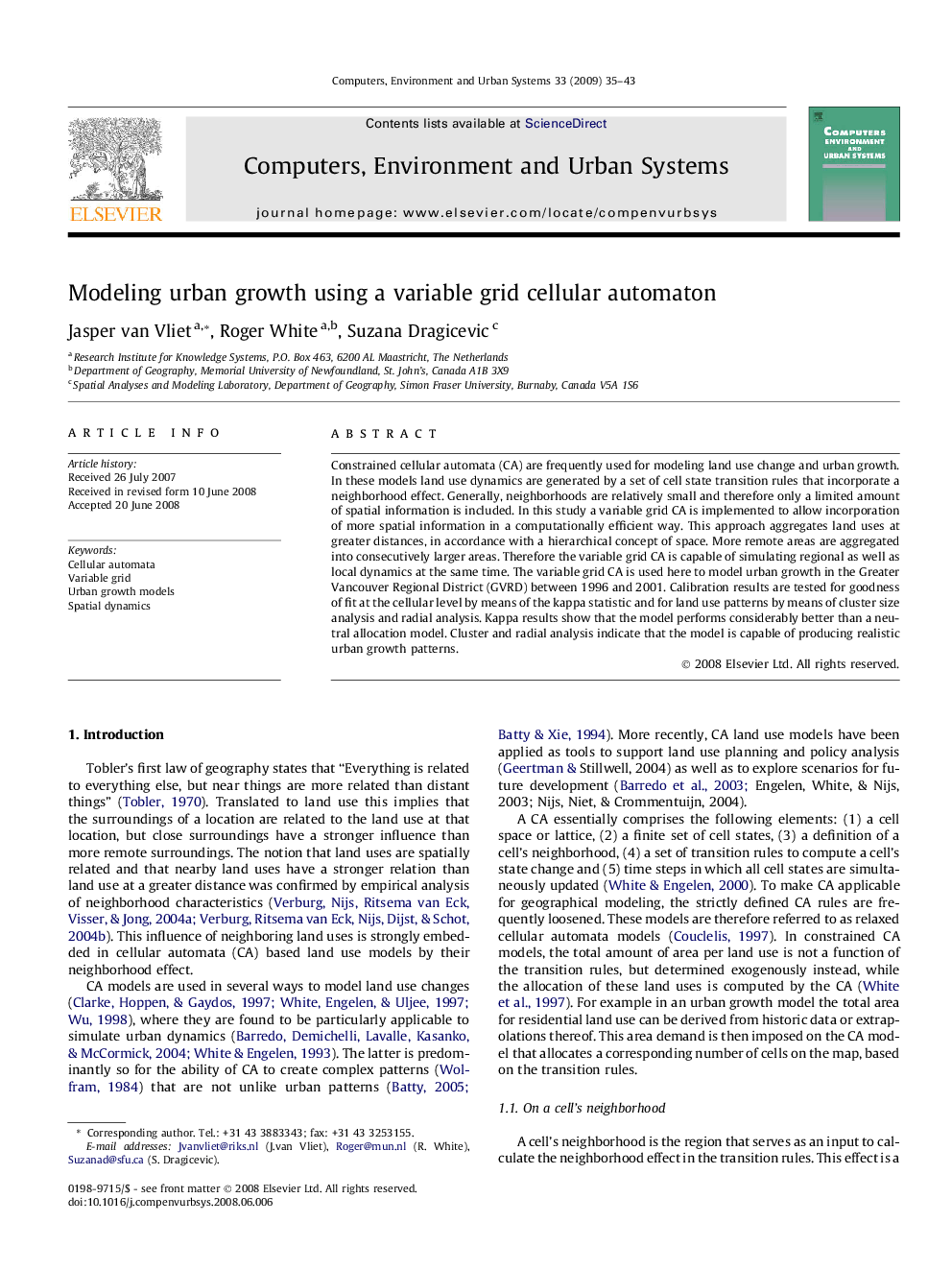| Article ID | Journal | Published Year | Pages | File Type |
|---|---|---|---|---|
| 506589 | Computers, Environment and Urban Systems | 2009 | 9 Pages |
Constrained cellular automata (CA) are frequently used for modeling land use change and urban growth. In these models land use dynamics are generated by a set of cell state transition rules that incorporate a neighborhood effect. Generally, neighborhoods are relatively small and therefore only a limited amount of spatial information is included. In this study a variable grid CA is implemented to allow incorporation of more spatial information in a computationally efficient way. This approach aggregates land uses at greater distances, in accordance with a hierarchical concept of space. More remote areas are aggregated into consecutively larger areas. Therefore the variable grid CA is capable of simulating regional as well as local dynamics at the same time. The variable grid CA is used here to model urban growth in the Greater Vancouver Regional District (GVRD) between 1996 and 2001. Calibration results are tested for goodness of fit at the cellular level by means of the kappa statistic and for land use patterns by means of cluster size analysis and radial analysis. Kappa results show that the model performs considerably better than a neutral allocation model. Cluster and radial analysis indicate that the model is capable of producing realistic urban growth patterns.
